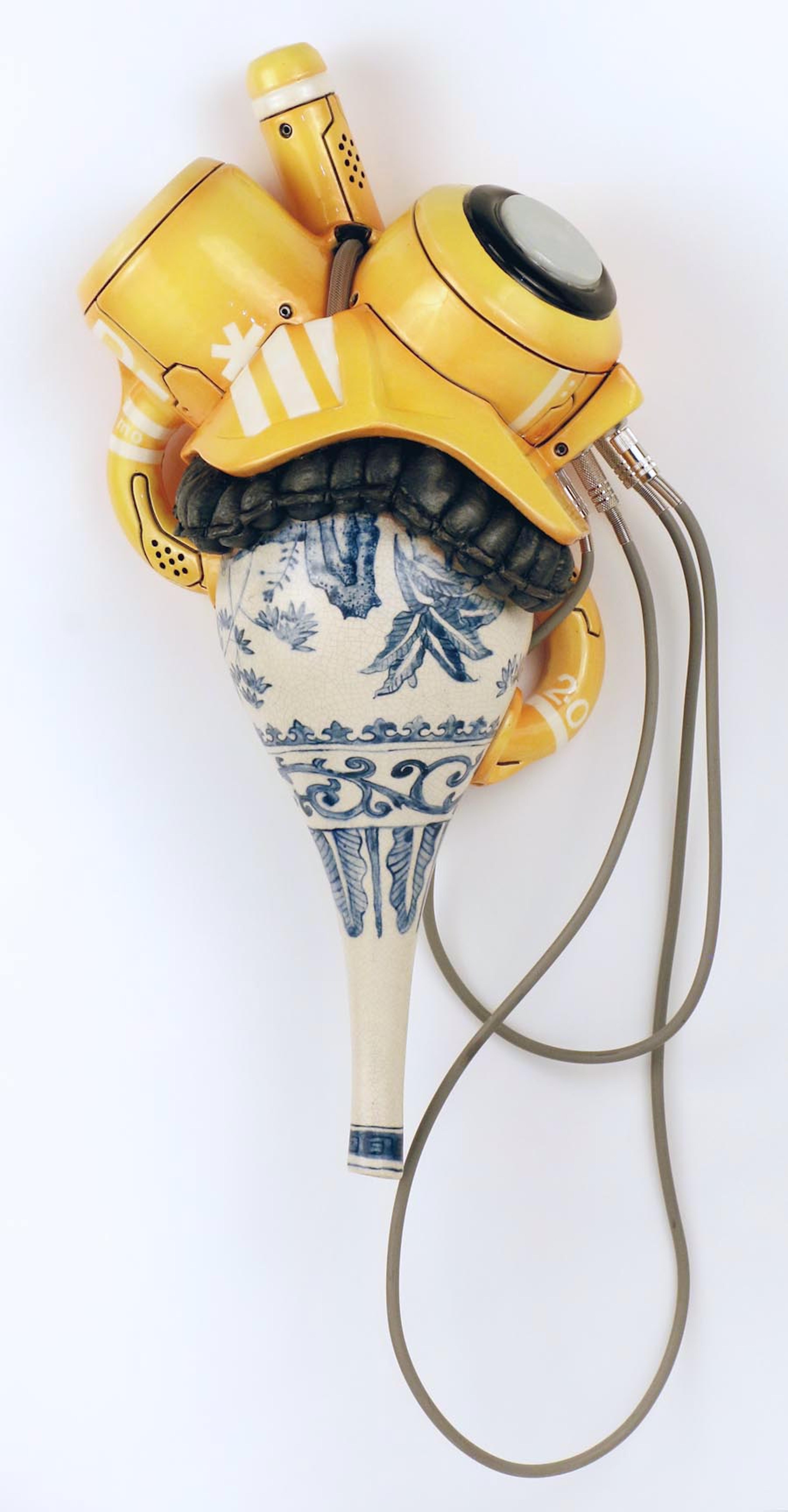During his exhibition “Manga Ormolu,” Brendan Tang’s gorgeous hybrids beckoned through the Southern Alberta Art Gallery’s temporary storefront window. Playing on the lure of consumer goods, Tang’s ceramic pieces have the visceral appeal of slick gift-shop merchandise. While they tempt with their craftsmanship and beauty, they also reveal the complexity of globalism and identity, questioning the commodification of cultures, nations, the past and even the future.
In this work, it seems as if ancient Chinese porcelains battle futuristic robotic prosthetics. Like Rococo ormolu—French gilded luxury fittings applied in the 18th century to imported Ming and Qing dynasty vases (among other objects) to make them more appealing to European aristocracy—Tang’s vessels are the product of long and ongoing cultural interplay. Each piece begins with what looks like a traditional hand-painted Chinese vase, mostly blue and white, complete with a delicate craquelure that suggests authenticity. Yet where Europeans framed the East by adding golden filigree, Tang anachronistically adds cyber-pop ceramic armatures, airbrushed to smooth perfection, which are simultaneously fun and menacing.
Tang relates the robotic references to Japanese comics and anime, which, like ormolu, are culturally complex. They evolved out of a combination of Western and Japanese traditions, became incredibly popular in Japan and are now, in some sense, global. Tang’s work adds nuance to the seeming permanence of cultural archetypes, revealing the malleability of such categories in contemporary culture as well as their staying power. While manga is part of global pop culture, it still stubbornly reads as Japanese. Similarly, while the blue-and-white ceramics have been copied in Delftware and the Ming dynasty’s blue glaze may have been imported from the West, they persist in signifying the Chinese.
Tang is often seen as Asian. Yet he describes himself as hybrid: raised in Canada, he was born in Ireland to Trinidadian parents who are of Chinese and East Indian descent. His history, like his work, instantly reveals the impossibility of unitary origins.
In some pieces, the manga-inspired future surrounds the chinoiserie, but the disruption is minimal. In others, the robotic seems to emerge from the ancient, like a symbiotic outgrowth of one Eastern tradition from another. In the most successful works, the futuristic seems to violently reshape the historic. Metal grommets, plastic tubes and fuel packs made of royal jelly and ginseng deform the traditional vessel’s body, as if the past itself were being restructured by a global imagination of the future, a future inspired by Japanese anime. But the traditional is resilient in Tang’s work. It bulges out organically where we don’t expect it, insisting on its relevance, refusing its own demise.
“Manga Ormolu” exposed the hybridity of cultural traditions, the stubborn persistence of tropes, and the problems with global commodities. It was also funny, beautiful and ever so tempting.
 Brendan Tang, Manga Ormolu Version 2.1d
Brendan Tang, Manga Ormolu Version 2.1d









